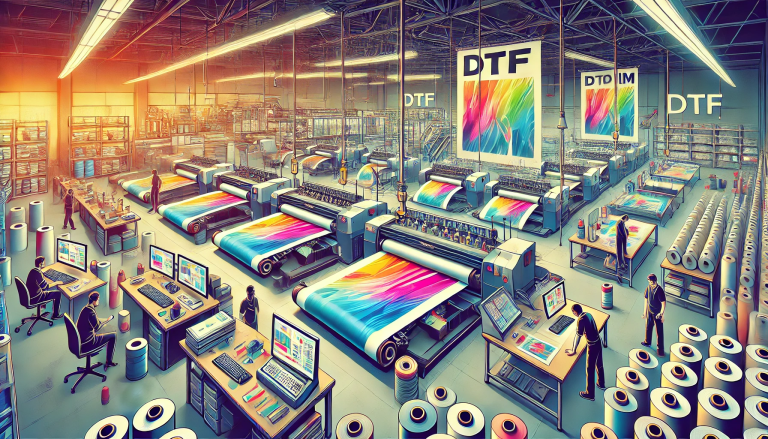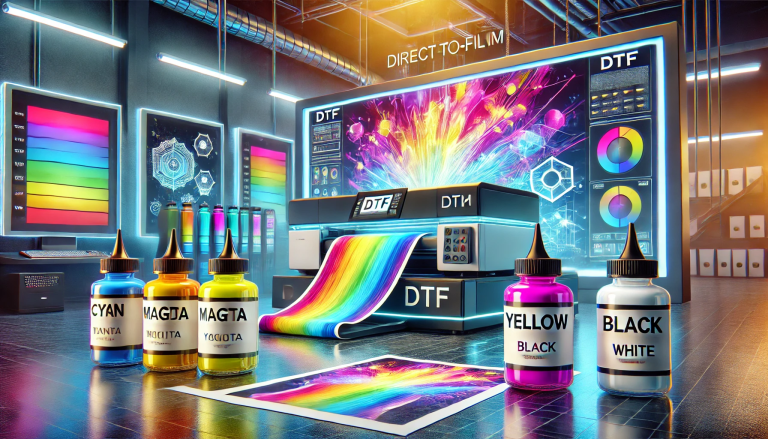“The Art of Impressions: How UV DTF Transfers Are Made” -MAXDTF- Direct to Transfer UV DTF Decal Manufacturer, DTF UV Film Factory, Made in China
Digital Textile Printing has revolutionized the industry, giving life to vibrant designs and intricate patterns that once seemed impossible to reproduce on fabric. Direct to Film (DTF) transfers are a significant development in this regard, offering high-quality, full-color transfers that can adhere to various surfaces, including fabrics, leather, wood, and more.
One exciting development within DTF technology is the introduction of Ultraviolet (UV) DTF transfers. This new methodology uses UV curable inks, which provide an enhanced color range, improved durability, and faster drying times. In this blog post, we’ll delve into the fascinating process behind the creation of UV DTF transfers.
Step 1: Design Creation and Preparation
The journey of a UV DTF transfer begins on a digital canvas. Artists or designers use graphic design software to create an image or pattern. This design is then mirrored (flipped horizontally) in preparation for printing, as the transfer process will reverse the image onto the substrate.
Step 2: Printing on the Film
Once the design is ready, it’s sent to a specialized UV DTF printer. Unlike conventional DTF printers that use regular inks, a UV DTF printer uses UV curable inks. The printer releases tiny droplets of ink onto a thin, transparent film, meticulously reproducing the design.
UV DTF printers can print white ink, which acts as a base layer for the other colors. This capability is critical when printing on darker substrates, as it allows the vibrant colors to stand out.
Step 3: UV Curing Process
This is where the UV aspect of the process comes into play. As soon as the ink is deposited onto the film, it’s exposed to strong UV light. This light triggers a photochemical reaction that instantly cures (dries and hardens) the ink.
UV curing is what sets this process apart from traditional DTF transfers. It results in faster drying times, allowing for improved production efficiency. Moreover, UV curable inks are resistant to fading, making the designs more durable and longer-lasting.
Step 4: Applying the Adhesive Powder
After the UV curing process, an adhesive powder is evenly applied over the design on the film. This adhesive will allow the design to bond securely with the substrate (the material to which the design will be transferred).
Step 5: Heat Press Transfer
The film, complete with the UV-cured design and adhesive, is then placed onto the substrate. A heat press machine is used to apply heat and pressure to the film, activating the adhesive and transferring the design onto the substrate.
The heat press is set to a specific temperature and time, depending on the substrate’s material. After the set time, the heat press is lifted, and the film is peeled away, revealing the transferred design.
Step 6: Quality Control and Finishing
The final stage involves a quality control check to ensure the design has transferred correctly and is well-adhered to the substrate. Any items that do not meet the required standard are discarded.
In summary, the UV DTF transfer process merges technology and creativity to create beautiful, durable designs on a wide range of materials. It’s a testament to how innovation continues to push the boundaries of what’s possible in the realm of digital textile printing. The next time you admire a colorful printed fabric, consider the impressive process and technology that might have contributed to its creation.




